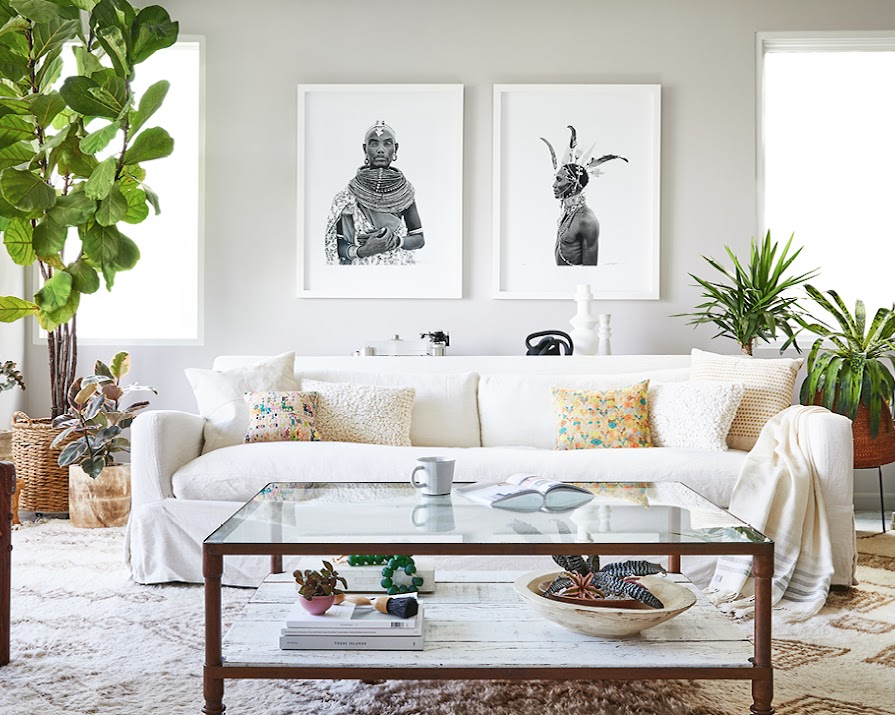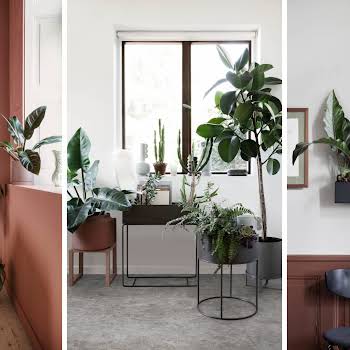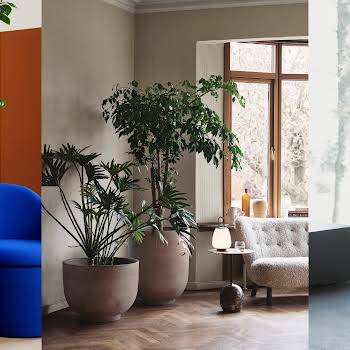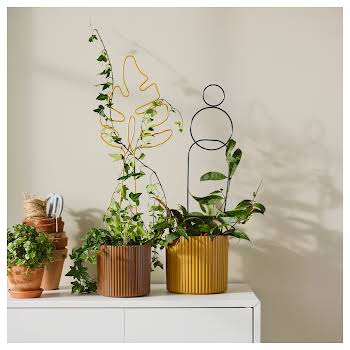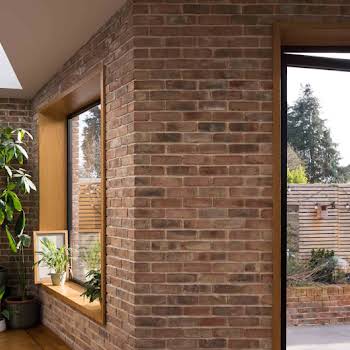
By IMAGE Interiors & Living
24th Apr 2020
24th Apr 2020
In her book, Decorating With Plants, Baylor Chapman shows how to incorporate plants into every room in your house, as well as giving helpful tips on everything from choosing varieties to keeping your plants healthy. Here, she shares the most common signs that your plants are struggling, and what to do about them.
Plants show you what they need. Caring for them is a matter of understanding and interpreting their signals and, when needed, changing things to keep them healthy. Here are some common maladies and possible solutions. If you’re really in a pinch, head to the Royal Horticultural Society website for help with plant diagnostics and suggested remedies.
Wilted or curling leaves
The most common cause of wilting or curling leaves is either underwatering or overwatering. If the pot feels lighter than usual, it is a good indication that the soil has dried out and needs water. Conversely, if when you lift the pot, there’s a pool of water in the saucer, you’ve been overzealous with the watering can. Empty the saucer and soak up any sogginess with a rag or newspaper.
If water doesn’t seem to be an issue, consider temperature. Heat can make a plant wilt, and curling leaves can be brought about by cold draughts near windows, doors, or open hallways. Aphid bugs can also cause curling, as they such the juices out of a plant’s leaves. If you spot these soft-bodies bugs, wipe them away or blast them with a tap’s spray to remove them.
Brown or yellow spots on leaves
Spots and patches on leaves are usually a sign of either a watering issue or pests. Do some investigating – brown crispy tips signal underwatering or low humidity; brown soft spots may mean you’ve been overwatering. It could also be a fungus or blight – remove any damaged leaves and make sure your plant has good air circulation.
Speckles on the surface of the leaves or a blister-like appearance may indicate that you have unwelcome scale insects. Remove these critters with a cotton swab soaked in rubbing alcohol, and be diligent, – they’re tough to conquer once they’ve interloped. Finally, if you’ve recently moved your plant from shade to a sunny spot, it may be sunburned – always move plants from shade to sun in stages to acclimatise them.

Ragged or holey leaves
If holes or notched edges suddenly appear on the leaves of your plant, it’s likely that the plant is hosting some sort of chewing insect. This can be treated fairly easily – pick off any adults and spray the affected area with soapy water. Evidence of snail activity usually includes a trail of shiny slime. Look in nooks and crannies where snails may be hiding from daylight.
Wrinkled or shrunken leaves
Naturally fleshy plants like succulents (including cacti and sansevieria) will let you know when they’re receiving too much or too little water. Gently touch a leaf: if it’s hard and wrinkled, it’s time to water; if it’s soft and prune-like or has gone to mush, it’s a sign you may have been overwatering.
Falling leaves
It’s quite normal for leaves to fall off some new or recently repotted plants. Give those plants time to acclimatise, and prevent shock by slowly and gradually moving them from an area of low light to one of bright light.
If you haven’t recently moved or repotted your plant, falling leaves could be due to an undesirable temperature change or could signal overwatering or underwatering (check your plant’s requirements). If the leaves progress from healthy green to pale then darker yellow and finally fall off, give your plant a shake – if a cloud of tiny flying bugs appears, you’re dealing with a white fly infestation. And remember, it’s natural for leaves to fall off your plant – old leaves will sometimes fall and be replaced by new growth.

Leggy stems
Spindly growth is a hint that your plant isn’t receiving enough light and is on the prowl to find it. The flat rosettes of an echeveria are particularly susceptible to such wanderings if left without adequate light. Other telltale signs your plant is light deprived include small leaves, pale green growth and leaf loss.
Sticky stuff
Leaves that are sticky to the touch may be home to unwanted guests. The stickiness is not from the plant but is a substance called honeydew, excreted by an insect pest. There are many different pest treatments out there. Most are pest specific, so it may require a process of elimination to find the right remedy.
Guttation
This is not as horrific as it sounds! Guttation is the term for tiny water droplets forming on leaf tips. Unlike dew, which settles on the leaves, this water comes from inside the leaf and is caused by wet soil. You’re most likely to notice this phenomenon in the morning before moisture has had a chance to evaporate.
Roots abound
If roots are popping out of the pot’s draining holes, it might be time to repot. Gently life out the plant; if it’s one mass of tightly knit roots, it’s time for an upgrade. If you want your plant to grow larger, slightly increase the pot size: break up the roots with your hands (or a clean knife), remove a portion of the soil, add some fresh potting mix to the pot, and replant. If you want to keep the plant about the same size, with a clean sharp knife or pruners, gently shave off about 2.5cm around the perimeter of the root ball. Add fresh potting mix to the same pot and replant.
Decorating With Plants: What to choose, ways to style and how to make them thrive by Baylor Chapman is out April 2 2019.












